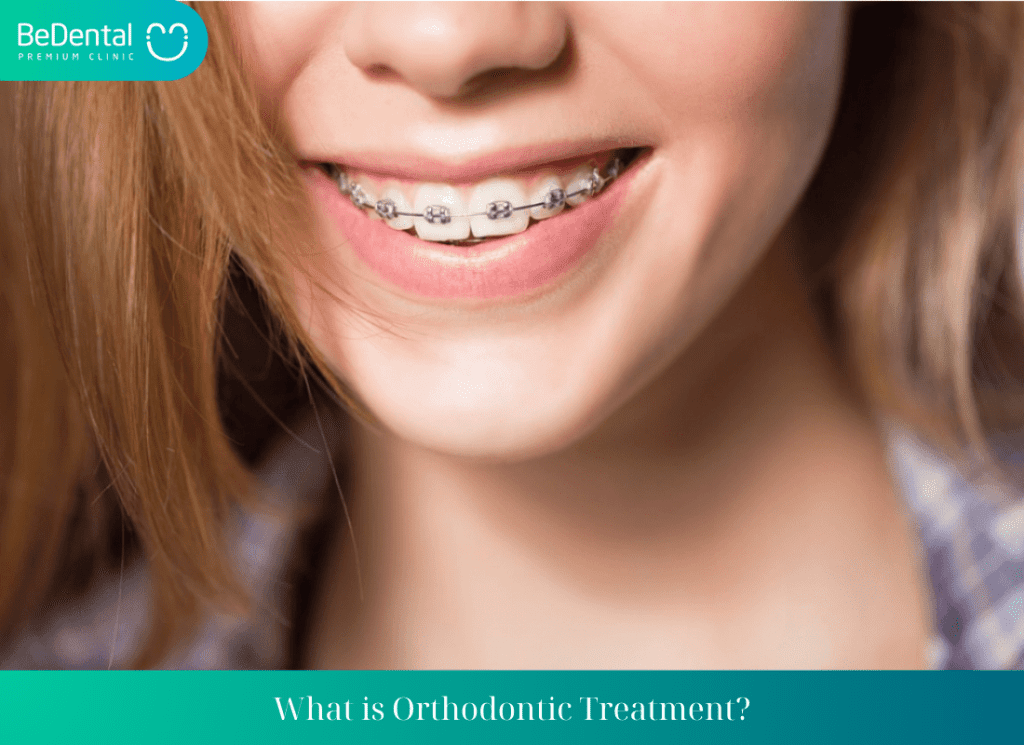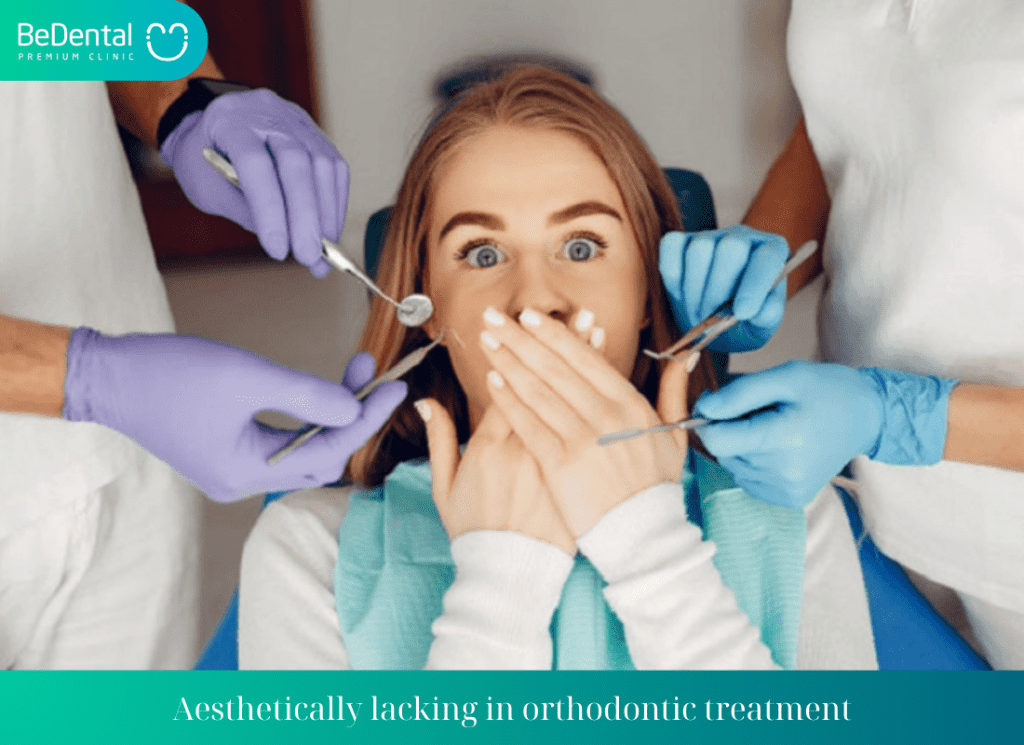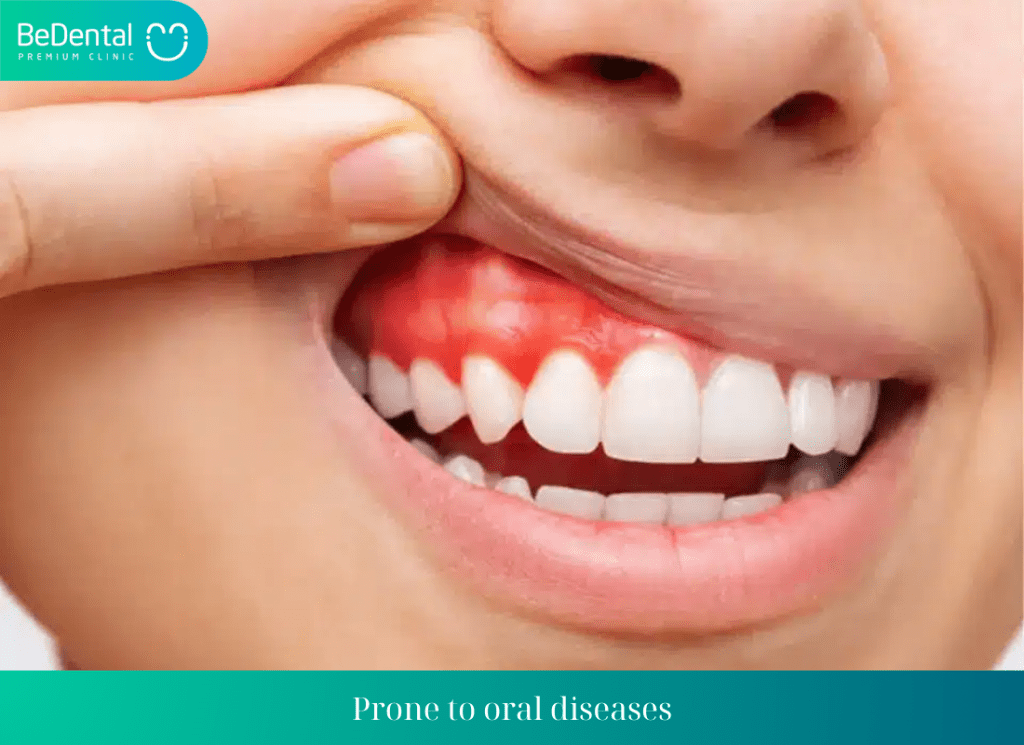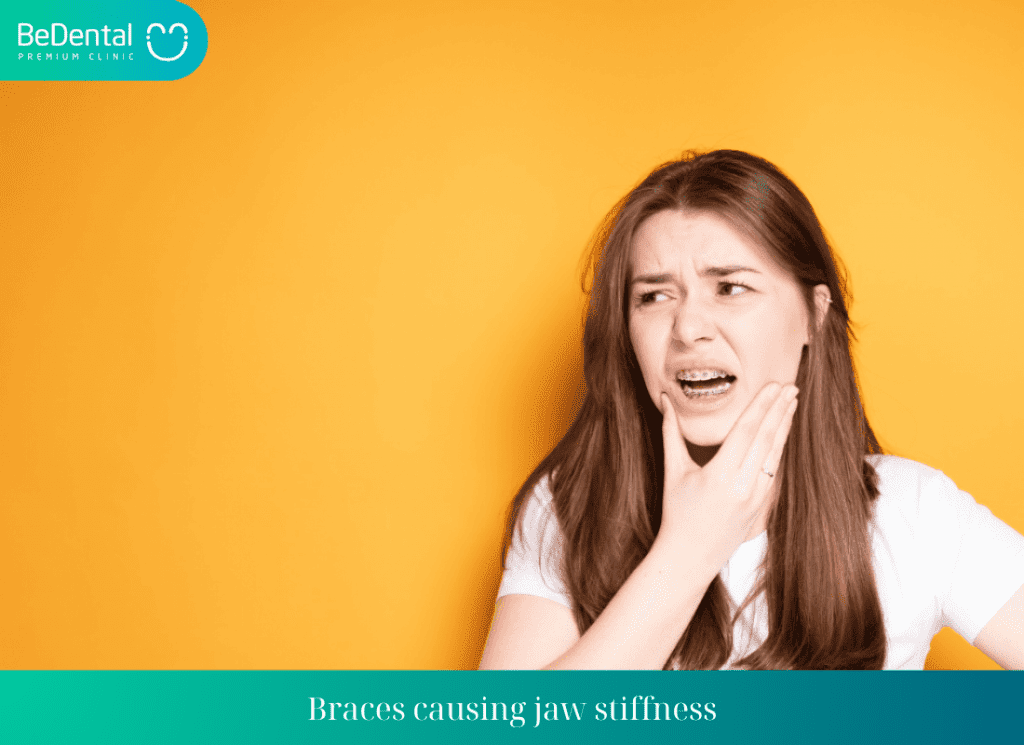Orthodontic treatment is a technique used to improve conditions such as crooked, protruding, or misaligned teeth, and to enhance confidence in aesthetics. However, like any other technique, orthodontic treatment has both advantages and disadvantages. There are some Orthodontic Treatment Side Effects Compilation that you should be aware of. The article below will help you compile the side effects caused by orthodontic treatment.
What is Orthodontic Treatment?
What is Orthodontic Treatment? Orthodontic treatment is currently considered a “savior” method for individuals facing oral issues such as misaligned teeth, protruding teeth, crooked growth, overcrowded teeth, overbite, etc.
In addition to rearranging the positions of teeth on the dental arch, orthodontic treatment also gives users a bright smile. This method does not cause damage or intrusion into the gum tissue surrounding the teeth, ensuring the safety of the user’s teeth. Orthodontic treatment is suitable and safe for most people, especially those who need to correct flaws in their dental arch and communicate frequently.
See more: Can cavities be braced?

With the advancement of technology, orthodontic treatment now has many methods and options suitable for the needs, budget, and dental condition of each individual. However, orthodontic treatment also raises many questions and concerns from users.
Orthodontic treatment is a method of dental correction using tools such as braces to adjust oral conditions such as protruding, crooked, spaced, misaligned, or crowded teeth.
This helps improve oral health, achieve even and beautiful teeth, and a confident smile. However, does orthodontic treatment have any impact? What are the side effects of orthodontic treatment?
See more: At what age can children get braces
Orthodontic Treatment Side Effects Compilation
Aesthetically lacking in orthodontic treatment
The first side effect that people often notice when undergoing orthodontic treatment is the issue of aesthetics. Throughout the approximately 2-year orthodontic treatment process, you have to wear braces, brackets, and wires on your teeth continuously. This can make your smile look less attractive.
Especially for those who are working or have jobs that require frequent communication with clients, this can be a significant hindrance in work and daily life. However, nowadays, you can rest assured because this side effect has been eliminated with the introduction of methods such as lingual braces and Invisalign clear aligners.

Prone to oral diseases
People wearing braces have a higher risk of oral diseases compared to normal individuals. Many people experience oral problems after a few months of wearing braces. The inability to thoroughly clean the teeth is a major factor leading to tooth decay.
Therefore, proper oral hygiene is essential for those wearing braces. Cleaning the teeth at least twice a day is necessary.
Allergic reactions to orthodontic appliances
Orthodontic appliances, wires, and brackets are made of metal. Although they have been tested for safety, there are still some rare cases of allergic reactions to the appliances or due to the use of low-quality appliances by the orthodontist. Therefore, to avoid this situation, it is important to choose a reputable orthodontist.
See more: Why do gums swell when getting braces
Teeth reverting to their original position after braces
Many people believe that after removing the braces, the teeth will maintain the corrected position. However, in reality, during the 6 months after removing the braces, the teeth are very sensitive and have the potential to shift back to their original position.
Therefore, it is important not to underestimate the post-braces period and to continue wearing retainers for at least 6 months to ensure that the teeth have stabilized in their new position.

Causing discomfort during braces
Discomfort during braces is an inevitable feeling throughout the braces process. Especially in the initial stages of wearing braces, you may experience pain or even mouth inflammation and ulcers, which can be uncomfortable. These are often side effects of braces that many people are concerned about before deciding to undergo this treatment.
Cost may be higher than initially planned
Before getting braces, you need to understand the additional costs that few dental clinics disclose in advance.
Firstly, there is the cost of wearing retainers. In reality, you may choose not to wear retainers, but most dentists will encourage you to do so to prevent teeth from shifting back to their original position.
See more: Bone resorption when wearing braces
Secondly, there is the cost of treating any oral health issues if present. Before getting braces, you need to address these issues thoroughly. Finally, there are investments in dental care products such as mouthwash, interdental brushes, dental wax, water flossers, etc.
Braces can lead to tooth decay
During the braces process, maintaining oral hygiene becomes more challenging than in normal cases because toothbrushes have difficulty reaching and cleaning the tight spaces between teeth. This increases the risk of tooth decay.
For those wearing braces, thorough tooth cleaning should be done twice a day, combined with using interdental brushes. Additionally, you may consider using a water flosser to help clean your teeth and gums more effectively.

Tooth calcium loss
Proper oral hygiene is crucial for those wearing braces. Failure to maintain good oral hygiene can lead to tooth decay and the appearance of white spots on the tooth surface. The cause of this phenomenon is the loss of minerals in the tooth enamel due to the action of bacteria, especially calcium.
Tooth root resorption
Orthodontic treatment can impact oral health, and one of the potential risks is tooth root resorption. Tooth root resorption is the shortening of the tooth roots during the braces process. In most cases, tooth root resorption only occurs to a small extent and does not seriously affect oral health.
See more: Will braces cause protrusion?
However, in some rare cases, patients may lose up to 50% of their tooth roots, which can lead to significant changes in their oral health in the long term.
Braces causing jaw stiffness
Jaw stiffness (ankylosis) is a rare condition that can occur when the tooth root integrates into the bone. As a result, the tooth cannot move even after braces, and the surrounding teeth will begin to shift, leading to the creation of gaps between teeth. This condition is difficult to predict and is typically identified through X-rays and clinical examination.

Some impacts of braces
Many people facing dental issues and needing orthodontic treatment often question whether or not to get braces and are unsure about the potential consequences that braces can have. In reality, braces can have harmful and significant impacts. Before delving into the harms of braces, let’s understand how braces can affect you. Braces can cause the following issues:
Mild discomfort
The first answer to the question “What impacts do braces have?” is that braces can cause mild discomfort. Initially, wearing braces can be uncomfortable, but over time, this discomfort will decrease. The braces work by shifting teeth in the desired direction. Therefore, this procedure often causes discomfort in the teeth and sometimes even headaches.
See more: Do braces change the jawbone

Mucosal damage
During the braces process, you will have brackets and wires attached to your teeth. This can stimulate the oral mucosa and cause discomfort. One common way to reduce the discomfort caused by braces is to use orthodontic wax. Orthodontic wax helps protect the oral mucosa from direct contact with brackets and wires, reducing stimulation and discomfort during the braces process.
Mild toothache after regular check-up
Many people often wonder if braces have any impact and whether they cause pain. The answer to this question is that braces can cause mild toothache in the teeth within the first few days after adjustments.
Feeling tight and mild discomfort in the teeth after an increase in force is normal and indicates that the teeth are moving in the right direction. However, if the pain is severe, it may indicate that the orthodontist’s force is too strong for that individual.
See more: All about lower jaw braces
In fact, jaw pain is a common condition during braces. Depending on the severity, you can use over-the-counter pain relievers to control this pain and should immediately inform the orthodontist if this condition occurs.
Difficulty eating and chewing
Do braces have any impact? The answer is that braces make eating and chewing food difficult. During the braces process, you will go through a phase of jaw tightening. The impact of jaw tightening and the consequences of braces can make it difficult to chew food, especially after tightening the braces.
You may feel pain and discomfort when chewing, especially when eating hard or tough foods. However, this condition only lasts for a short time initially, and after a few days to a week, you will feel more comfortable depending on each case.
Choose a reputable dental clinic for Orthodontic Treatment
We recommend choosing BeDental for orthodontic treatment due to their expertise, personalized care, and commitment to patient satisfaction. With a team of skilled orthodontists and modern dental technology, BeDental offers a range of orthodontic solutions tailored to your unique needs.
From traditional braces to innovative clear aligner systems, BeDental provides comprehensive orthodontic care to help you achieve a straighter, healthier smile. Their friendly staff and comfortable environment create a positive experience for patients of all ages. Trust BeDental for exceptional orthodontic treatment and a confident, beautiful smile.
This article has helped you summarize the harms caused by braces. We wish you success in your upcoming braces journey.
Tư vấn chuyên môn bài viết:
BÁC SĨ DƯƠNG THỊ THÙY NGA





